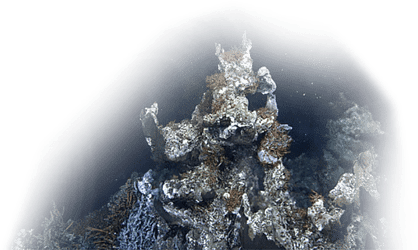A year after discovering '[Spongetopia](https://www.theglobeandmail.com/canada/british-columbia/article-bc-photographic-expedition-of-undersea-volcano-to-capture-marine/)' in 2018, a team from Fisheries and Oceans Canada (DFO) and the Nuu-chah-nulth Nation, with support from partners Ocean Networks Canada (ONC), embarked on the two-week #PacificSeamounts2019 expedition in July that uncovered the mysteries of Canada’s largest underwater volcano—Explorer seamount—at the centre of a potential Offshore Pacific Marine Protected Area.
Read more about the expedition here.
Watch the expedition overview video [here](https://www.youtube.com/watch?v=ajmI_Xur1F0).
Alerts
SHOWING 2 RESULTS
Showing matches for "coral"
Seamounts expedition discovers 'Coraltropolis' and scratching shark
Overview
Researcher in Residence: Claudio Lo Iacono and cold-water corals
Overview
Coral communities aren’t just beautiful - they are also home to multiple underwater species, making them an important hotspot of biodiversity in oceans around the world. Corals are under threat due to ocean acidification from climate change, pollution, bottom trawl fishing and the increasing presence of marine litter, and need urgent measures to protect and conserve them.
A new study of cold-water coral communities located in Barkley Canyon off the coast of southern Vancouver Island aims to better understand how they function and adapt to changing environmental conditions, to order to contribute to the management and conservation of these ecosystems.
From June until October 2022, Claudio Lo Iacono, ONC Researcher in Residence and senior scientist from the Marine Sciences Institute of the Spanish National Research Council (ICM-CSIC) in Barcelona will be working with ONC senior scientist Fabio De Leo. Their collaborative study is tackling several unknowns for Barkley Canyon.
# Internal tide waves’ effect on coral
Internal tide waves are large and long-standing waves generated in the ocean interior and controlled by tidal cycles. Up to 200 m high, these waves are recorded daily by several NEPTUNE “nodes” around the area at a depth between 800 m and 1000 m, and their role as physical mechanisms responsible for cold-water corals’ functioning is currently unclear. In steep topographic terrains, such as near the walls of submarine canyons, the breaking of internal tides generates turbulence and mixing that brings sediments rich in nutrients essential for coral feeding.
This study will quantify the role of internal tide waves on the maintenance of coral assemblages observed on the “coral cliffs”, located within Barkley Canyon at the depth of around 900 m.
Stay up to date with ONC
Subscribe

Ocean-Climate Building University of Victoria
#100, 2474 Arbutus Road, Victoria, BC, Canada, V8N 1V8
info@oceannetworks.ca+1 (250) 472-5400Marine Technology Centre University of Victoria
#106, 9865 West Saanich Road, North Saanich, BC, Canada, V8L 5Y8
info@oceannetworks.ca+1 (250) 472-5400@ 2025 Ocean Networks Canada. All rights reserved.